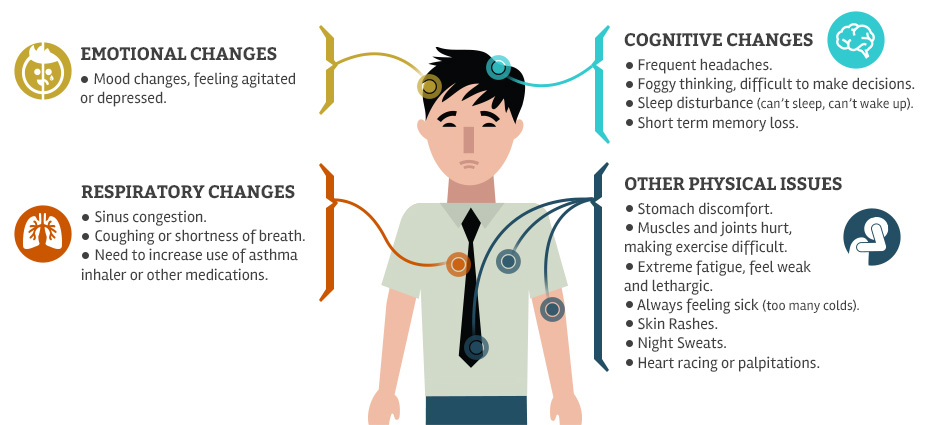According to Health Canada, indoor mould is a significant health hazard. Mould is a fungus, of which there are many types, that can grow in homes and other buildings. It can affect your respiratory system and make asthma worse if you have it. In extreme cases it can lead to cancer. People living in homes with mould and damp conditions are more likely to have:
- eye, nose and throat irritation
- coughing and phlegm build-up
- wheezing and shortness of breath
- worsening of asthma symptoms
The young, the elderly and people with existing health problems may be more susceptible to the effects of mould. Any concerns should be brought to a medical professional.
Health Canada recommends controlling dampness indoors and cleaning up any mould.
Smell something musty?
It’s not always easy to see the problem as mould can be hidden in walls, above the ceiling or many other places. One thing is for sure – it will be in a damp place. Ceilings, windowsills, bathrooms, laundry rooms and basements are all possible locations where dampness can provide an environment for mould to grow.
Immediate action is important. Mould will begin to grow within 48 hours.
In newly built homes, mould can be the result of Code violations. Inadequate or poorly installed HVAC systems can lead to mould that causes illness.
In 2012, CPBH led a group of homeowners to the Ontario Legislature to bring attention to the problem. That same year, CTV’s W5 did a segment on this issue called “Cold Comfort”. CPBH brought HVAC industry leaders together who ultimately expressed their commitment in a Joint Statement that “properly designed and properly installed HVAC system is critical for home comfort and for the safety and health of occupants.”
Read more about the progress made and the Joint Statement here: https://canadiansforproperlybuilthomes.com/what-weve-learned/hvac/
If you have moisture problems and mould in your newly built home, whether the cause is hvac or a crack in the foundation or any other reason, the first thing to address is the health of the people who live in the home.
Read the Health Canada page on mould https://www.canada.ca/en/health-canada/services/publications/healthy-living/addressing-moisture-mould-your-home.html , the hvac page on this site https://canadiansforproperlybuilthomes.com/what-weve-learned/hvac/ and the information about dispute resolution https://canadiansforproperlybuilthomes.com/what-weve-learned/dispute-resolution/.
This infographic below was obtained from Canada Housing and Mortgage Corporation (CMHC). It provides information about possible sources of moisture and mould in a home.
Your builder, industry professionals, your warranty provider, and the city or municipality may all have a role to play in resolving the mould issues.
Addressing mould problems promptly is important for good health.





